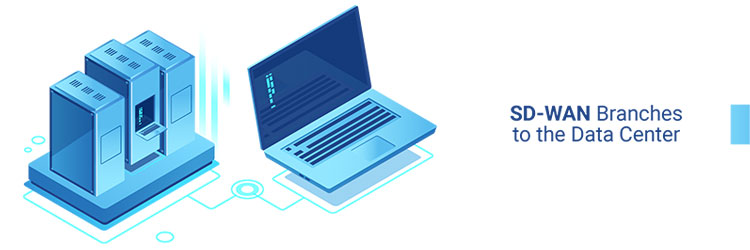SD-WAN Migration Overview and How It Works
Migrating information from one network to another used to be a tedious affair. The software-defined solution makes it easier so that you don’t have to ask your technicians to pull out cables and other hardware since SD-WANs are designed to operate on top of what’s already in place. Before the migration begins, an assessment will be done the network to see what devices comprise the architecture and what connections are used to support it.

SD-WAN Migration Steps
SD-WAN deployment options give organizations to deploy to branch offices and remote sites quickly either as physical appliances or software. Before beginning the migration process, leadership will need to work with their IT staffs and following these ten steps to ensure the network transitions goes smoothly:
-
SD-WAN Readiness
Determine what applications are using the most throughput within your network and which of them will be given priority. This includes traffic flows and patterns, any cloud services that are being utilized, SaaS applications, and how to tie them all together into a unified platform.
-
Assess Access Types
Not all access types are created equal. Simply chaining together different connections will not create an efficient network. You will need to have your teams assess the quality and capabilities of your access lines to ensure that your’s organization’s expectations are met.
-
Assess How the SD-WAN Will Integrate into Your Current Network
SD-WANs doesn’t necessarily cover the entirety of the network in terms of functionality. Consider how to integrate the SD-WAN into your infrastructure when designing the network. This will help you assess protocol and application use, while providing a grounded understanding of bandwidth and protocol.
-
Find Out if SD-WAN Will Mesh with Your Cloud Strategy.
Validate that your SD-WAN will work with the clouds you chose such as Amazon Web Services or Microsoft Azure. Some of the software-defined solutions will only create paths to public cloud providers through a local internet breakout, others through hub-style breakouts. Some of the solutions may not be fully optimized for performance or latency. In addition, they may support only a limited number of cloud providers.
-
Mapping Out Connectivity Flows
Finding out how your connections flow within your network is essential to configuring policies for the SD-WAN. This ensures that application throughout is distributed fairly based on those policies. Be clear on your bandwidth, routing, and performance requirements for your applications.
-
Keeping Best Practices and Aecurity Policies Up to Date
Use this opportunity during the design and test portion of your deployment to test applications against current and future compliance or corporate security policies. By using SD-WAN, you’ll be able to leverage the capabilities of the public internet. At the same time, not having the proper mechanisms in place when using it can expose your network to different cyber attacks.
-
While Planning your Migration, Consider Executing a Pilot Test
Launching a pilot test for your network gives you opportunities to iron out any potential issues or flaws that may come up. Determine if the network’s design is utilizing the correct access types for your network and support the priorities of your applications.
-
Site Priority and Applications for Migration
Give priority to applications and sites that will benefit the most from the transition to the SD architecture. You’ll need to think about key locations within your network as well as where applications are hosted. This will give you a better idea on how to design your migration plan.
-
Monitor Your Network During the Deployment Process
Validating and verifying that the solution will be necessary to see how the network performs when stressed. You should also have the ability to monitor remote site traffic and leverage private and public connections in active-active mode. Ensure that your most critical traffic traverse the most stable paths within your WAN, while low-priority traffic utilizes cost-effective routes.
-
Efficient Network Monitoring
Use the data from your SD-WAN’s monitoring systems to give full visibility for your application and WAN performance.

Examples of Migrating SD-WAN
Some of the case examples of organizations migrating from traditional WANs to SD-WANs include:
- Intuit’s transition to a hybrid SD-WAN: the company utilizes both traditional WAN connections along with the failover capability of SD-WANs.
- A South American ISP utilized a transoceanic network connection to migrate data between Brazil and Miami.
- A Tier 1 provider migrates data via SD-WAN by optimizing utilization of capacity, while reducing network costs at the same time.

SD-WAN Branches to the Data Center
The SD architecture utilizes the unified connection embedded within the network to connect to the data center.
Branch Firewall
Each branch office will have localized firewalls to monitor for any malicious traffic that attempts to infiltrate the network and respond accordingly.
Existing MPLS WAN with SD-WAN Offload
The software-defined solution allows the use of existing network connections to offset bulk data throughout that traverses between location.
Secure and Optimized Communication Between SD-WAN Branches
Communications between the branch offices, remote sites, and their headquarters occur via the use of end-to-end connectivity and network zoning. This helps in ensuring that multiple sites are secure from external threats.

